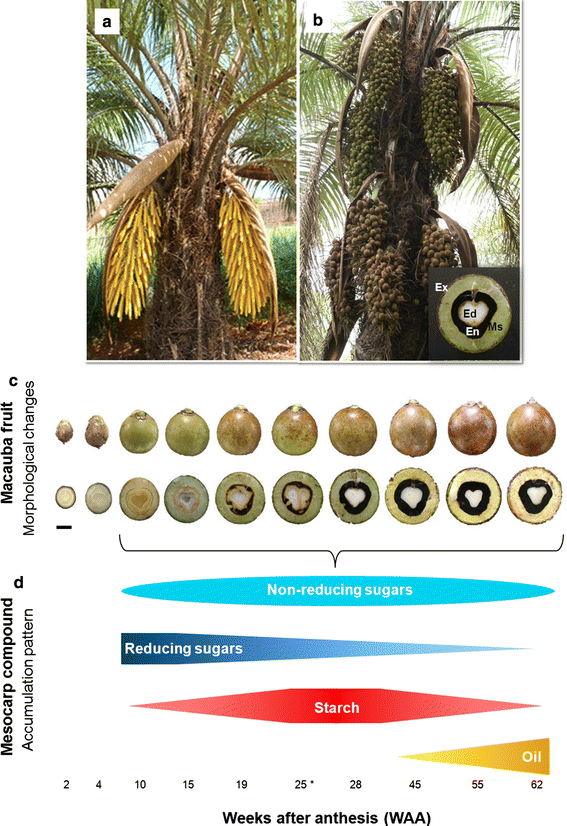Fruit development, growth, and stored reserves in macauba palm (Acrocomia aculeata), an alternative bioenergy crop
terça-feira, fevereiro 19, 2019
Authors: Sebastián Giraldo Montoya, Sérgio Yoshimitsu Motoike, Kacilda Naomi Kuki, Adriano Donato Couto
Abstract: Main conclusion Macauba palm fruiting is supra-annual, and the fruit growth follows a double sigmoidal trend. The prevailing compound in the mesocarp differs as the fruit ages, oil being the major storage compound.
 Acrocomia aculeata, macauba palm, is a conspicuous species in the tropical Americas. Because the species is highly productive in oil-rich fruits, it is the subject of domestication as an alternative vegetable oil crop, especially as a bioenergy feedstock. This detailed study first presents the macauba fruit growth and development patterns, morphological changes and accumulation of organic compounds.
Acrocomia aculeata, macauba palm, is a conspicuous species in the tropical Americas. Because the species is highly productive in oil-rich fruits, it is the subject of domestication as an alternative vegetable oil crop, especially as a bioenergy feedstock. This detailed study first presents the macauba fruit growth and development patterns, morphological changes and accumulation of organic compounds.
Fruits were monitored weekly in a natural population. The fruiting was supra-annual, and the fruit growth curve followed a double sigmoidal trend with four stages (S): SI—slow growth and negligible differentiation of the fruit inner parts; SII—first growth spurt and visible, but not complete, differentiation of the inner parts; SIII—growth slowed down and all structures attained differentiation; and SIV—second growth spurt and fruit maturation. In SII, the exocarp and endocarp were the main contributors to fruit growth, whereas the mesocarp and endosperm were responsible for most of the weight gain during SIV.
In comparison with starch and oil, soluble sugars did not accumulate in the mesocarp. However, starch was transitory and fueled the oil synthesis. The protective layers, the exocarp and endocarp, fulfilling their ecological roles, were the first to reach maturity, followed by the storage tissues, the mesocarp, and endosperm. The amount and nature of organic compounds in the mesocarp varied with the fruit development and growth stages, and oil was the main and final storage material.
The description of macauba fruit’s transformations and their temporal order may be of importance for future ecological and agronomical references.
To read the full article, click here.
Page: NCBI


















0 comentários
Agradecemos seu comentário! Volte sempre :)